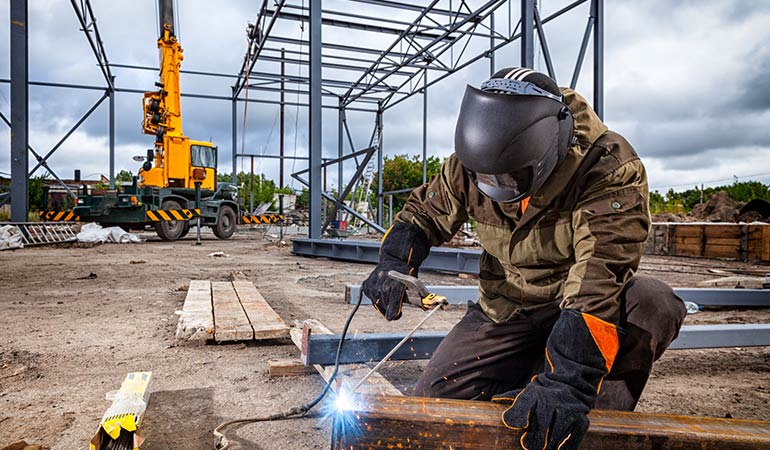
Mechvac Series Rotary Vane Pumps
Despite being reasonably ubiquitous, rotary vane pumps may be unfamiliar to you. While they are not well-known, rotary vane pumps are essential to everyday life. Whether transferring power steering fluid in a car, ensuring the correct amount of carbonation in a fountain drink, or moving thick liquids without compromising their quality, rotary vane pumps play an essential part in the items you use.
Below you will discover information about Mechvac Series rotary vane pumps, how they function, their benefits and drawbacks, and the various varieties of vane pumps.
What exactly is a rotary vane pump?
A rotary vane pump, also known as a vacuum pump, is a self-priming positive displacement pump that uses vanes fixed to a rotor inside a cylindrical cylinder to transfer fluids and gases. The liquids and gases are compressed, pressurized, and discharged through the pump outlet. Vacuum pumps are used in various automotive applications, including power steering, air conditioning, and automatic gearboxes. Rotary vane pumps are also used in the food and beverage industry for fountain drink dispensers, espresso machines, and the transfer of viscous liquids. They feed pressured water to reverse osmosis filtering membranes in the water treatment business.
What are the applications of Rotary Vane Pumps?
In automobiles, high-pressure vacuum pumps are often employed to carry freon, power steering fluid, and transmission fluid. On the other hand, medium-pressure pumps convey water in espresso machines and carbonated beverage dispensers. Low-pressure rotary vane pumps, albeit less frequent than higher-pressure pumps, are employed in chemical vapor deposition, a method used to generate thin films for semiconductors. Other applications for vacuum pumps include:
- Dust extraction systems
- Furnaces for industrial use
- Filtration by vacuum
- Degassing
- Crystallization
- Drying by distillation
Is oil required for rotary vane pumps?
In some circumstances, oil is a valuable supplement to a rotary vane pump, although it is not appropriate for all applications. Oil serves four critical purposes in a vane pump:
- Seals located between the rotor and the vanes
- Creates a second seal between the vanes and the chamber.
- Disperses heat to cool the pump.
- Corrosion protection for components
- Oil seals vacuum pumps, making them significantly more efficient than dry-running ones.
On the other hand, oil can depart with compressed gases in a pump, rendering it unsuitable for particular uses. Oil traps help to reduce oil expulsion; however, pumps will continuously expel oil no matter how good the oil trap is.
The Benefits of Rotary Vane Pumps
Regardless of the type of vanes used, rotary vane pumps have numerous advantages.
- Durable vanes provide a longer lifespan.
- Quiet operation
- Little vibration
- Easy to maintain
- It can be used entirely dry
- Lightweight and small
- The discharged liquid is not affected by changes in viscosity.
- Low pulsation and a stable flow rate
Types of rotary vane pumps
Rotary vane pumps generally serve the same purpose, although their vanes can be of many various forms. These vane types are as follows:
Sliding – vanes slide in and out to draw liquid into the chamber through the inlet port.
Flexible: Flexible Vanes keep in touch with the rotor walls, trapping liquid as they rotate.
External – vanes are installed in the pump’s casing rather than the rotor.
Rotating: Vanes revolve inside the chamber to catch liquids.
Oscillating – vanes suck liquids in by pumping in an oscillating motion.
The most popular type of rotary vane pump is the sliding and flexible vane pump, which is utilized in various commercial applications. Sliding vane pumps are typically found at beverage fountains and espresso machines. They carry water into pressurized CO2 tanks and heat it before passing it through espresso grinds. On the other hand, flexible vane pumps are often utilized in food and pharmaceutical applications. They are good at transporting viscous liquids, such as creams, and liquids containing particles, such as yogurt, without compromising product quality.
How does a rotary vane pump work?
Two or more chambers in rotary vane pumps compress, rotate, and discharge gases and liquids. The vacuum created by these chambers pressurizes the contents, allowing them to pass through the pump’s exit. The vanes slide in and out and turn against the rotor’s inner wall. One chamber is formed when the vanes rotate, and the outlet valve separates the chamber into suction and discharges sides. The fluid enters the chamber’s suction side, compressing with each spin. When the suction chamber is complete, the contents are discharged into the discharge chamber and out of the pump outlet. Finally, an exhaust valve prevents backflow by preventing contents from reentering the pump.
Advantages Of Rotary Vane Pump?
Rotary vane pumps are positive displacement pumps that use a rotor with vanes to create a vacuum and pump fluid. They offer many advantages over other types of pumps, including:
- They are very efficient and can achieve high flow rates at low pressures. It makes them ideal for pumping viscous fluids or slurries.
- They are reliable and can handle a wide range of operating conditions.
- They are relatively easy to maintain and repair.
- Their compact size makes them suitable for tight spaces.
- They can self-prime, making them ideal for applications without an external pump.
- They can transfer liquids of various viscosities and with different solids content.
WHY PARTNER WITH MECHVACTECH
Mechvactech is a global leader in manufacturing World-Class Quality Vacuum Pumps and Systems and providing top-notch OEM replacement spares for all your vacuum systems. By pushing the limits of science to create cutting-edge products essential to daily life, collaborating with our clients, and consistently establishing new benchmarks, we are happy to be the industry leader.
We are experts at offering our customers high-end repairing, overhauling, and specialty coating services in many business sectors.
Mechvactech Vacuum Pumps is committed to providing its clients with high-quality vacuum products that are also reasonably priced. We care about both saving energy and the environment at the same time. Our main goals are to enhance product quality and implement contemporary technologies to serve various sectors best. Mechvatech’s staff makes an ongoing effort to investigate its expansion and reputation on a global scale.
Frequently asked questions on Rotary vane pumps
A rotary vane pump is a positive displacement pump that uses a set of vanes to move liquid or gas from the inlet to the outlet. Rotary vane pumps can be self-priming, which means they can be started up without first filling the pump with fluid from a separate source. However, if the rotary vane pump becomes blocked (for example, if it sucks up a piece of debris), it will lose its ability to self-prime and must be primed manually.
Rotary vane pumps are used for pumping liquids and gases. They are more efficient than centrifugal pumps and can handle more viscous fluids. They are also smaller in size and can be used in restricted spaces.
Rotary vane pumps work by using a rotor with vanes that rotate inside a stator. The liquid or gas is drawn into the pump through the inlet and expelled from the outlet. As the rotor turns, it picks up fluid from the inlet and pushes it toward the outlet. This process continues until all the liquid or gas is pumped out of the pump.
A rotary vane pump is a type of positive displacement pump. It consists of a cylindrical housing with a rotor (a shaft with radial blades) that fits inside the housing and vanes that project radially from the rotor into the housing. The pump creates suction by drawing air in through an intake port and expelling it through an exhaust port. As the rotor turns, the vanes move in and out of the housing, displacing the air and creating suction and expulsion.
Rotary vane pumps are used to move liquids or gasses at low to moderate pressure and are often used as vacuum pumps. They can be classified according to their construction: oil-sealed rotary vane pumps, dry vane pumps, and liquid ring rotary vane pumps.
Oil-sealed rotary vane pumps are the most common type of rotary vane pump. They use oil to lubricate the moving parts and to seal the space between the rotor and the housing. The oil also helps to cool the pump by dissipating heat. Dry vane pumps do not use oil for lubrication or sealing; instead, they rely on a close fit between the rotor and the housing.
Dry vane pumps are used when there is a possibility of leaks, such as in food processing or pharmaceutical applications. Liquid ring rotary vane pumps are similar to oil-sealed rotary vane pumps, but they use a liquid (usually water) to lubricate and seal the moving parts.
Liquid ring rotary vane pumps are used when the pumped liquid is incompatible with oil, such as in sewage treatment plants.




